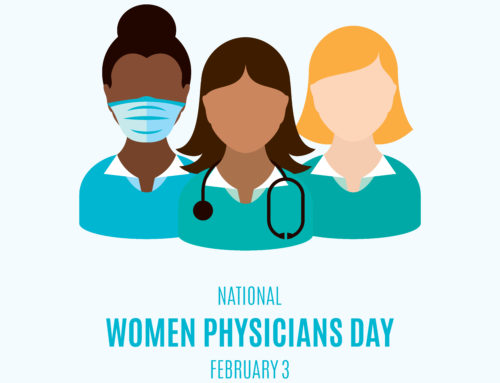Did you know that one in five Americans will develop melanoma in their lifetime? It's the fastest growing cancer in the world, and it spreads earlier and more quickly than other types of skin cancer. For young people ages 15 to 29, it's the second most common type of cancer diagnosis. Most people don't think about their risk of cancer at a younger age – but the average age for a melanoma diagnosis is just 50 years old!
Melanoma is different than other skin cancers. Even in its early stages, it has the potential spread throughout the body's lymph system and occasionally through the whole body by means of the bloodstream. It may also occur in oral, vaginal, anal, nasal and intestinal mucus membranes. Sometimes melanoma's primary lesion resolves without a trace, leaving cancerous cells inside the body. That's why a seemingly small lesion can be potentially devastating and hard to treat if it's ignored.
"It's absolutely critical that people of all ages have their skin routinely checked by a dermatologist to watch out for unusual skin changes," says Alvaro Valle, MD, surgical oncologist with University Surgical Associates. "This is so important because when skin cancer – including melanoma – is found earlier, it's much easier to treat effectively."
Melanoma often begins with something that looks like a mole and can be removed quickly – if it's caught early. Moles can sometimes be mistaken for beauty marks, so they fly under the radar and don't get the attention they should. This underscores the importance of having a dermatologist take a closer look at anything abnormal on your skin.
THE ABCDEs of Skin Cancer
There's also a simple way to evaluate your skin regularly. Remember the ABCDE rule to help identify suspicious looking moles:
A – Asymmetry (One half of the mole doesn't match the other).
B – Border that is irregular, scalloped or poorly defined.
C – Color that is not uniform; has shades or tan, brown or black and is some time white, blue or red.
D – Diameter greater than 6 mm (about the size of a pencil eraser).
E – Evolving shape, size or color.
Learn more about the ABCDEs here. And click here for 5 Points to Ponder about Melanoma.

WHEN IT'S ADVANCED
Melanoma is considered to be the deadliest type of skin cancer. More aggressive treatments are generally indicated as opposed to non-melanoma skin cancers like basal cell and squamous cell carcinoma. If you or a loved one has been diagnosed with melanoma, the stage of the cancer will determine what treatment is needed.
Dr. Valle points out that pre-melanomas and early stage melanoma lesions can many times be effectively treated in a dermatologist's office. For people who have a more advanced stage melanoma, a wide excision in combination with a lymph node biopsy may be necessary to remove all traces of cancer. When sample lymph nodes are removed and tested, the results help your doctors determine further treatment decisions. The procedure is called sentinel node biopsy.
"If a patient has advanced or invasive melanoma, we use the standard approach recommended by the National Comprehensive Cancer Network clinical guidelines which require a larger amount of tissue to be removed around the perimeter of the lesion," says Dr. Valle. "It's in these instances we can be most helpful to patients – by performing procedures that require anesthetic support in a hospital-based outpatient facility."
One example is when just a few melanoma cells are found in the lymph nodes, the cancer is generally moved to a stage 3. This bump in stage drastically increases the chance of recurrence, but it also opens the door for many effective immune-system based treatments. Consider asking your doctor if a sentinel node biopsy is appropriate. USA's surgical oncology team is well positioned to coordinate other treatment needs, including drug therapy or immunotherapy, as well as providing resources for living well with cancer and into survivorship.
CRITICAL FOLLOW UP
No matter if you have multiple skin lesions or have been diagnosed with pre-melanoma lesions or other pre-skin cancers, early detection and prevention is key.
"The type of melanoma, the stage and the risk of recurrence are considered strongly in patient follow up appointments. If the cancer does recur, it's much easier to treat in the earliest stages," says Dr. Valle. "For all patients, a dermatologist's evaluation is crucial on an ongoing basis. If you spot something unusual on your skin, don't wait. Talk to you doctor right away. It could save your life."

Alvaro Valle, MD, FACS is a surgical oncologist with University Surgical Associates. He is board certified and a fellow of the American College of Surgeons. Dr. Valle specializes in oncologic and breast surgery.
To schedule an appointment for a second opinion, more information on melanoma, or to be treated here, call (423) 267-0466 or visit universitysurgical.com.






Huh, it was quite mind blowing to realize that a mole with wide and oddly-shaped circumference must be closely monitored and be given further inspection by a specialist to prevent it from being a melanoma. That might be just what I found on my cousin’s shoulder while we went for a swim last weekend. I’ll share this info with him so he could make an appointment pronto.
The article offers practical advice for expectant mothers getting ready for the procedure. It covers various aspects to consider before and after the surgery, providing valuable insights into what to expect during this significant event.